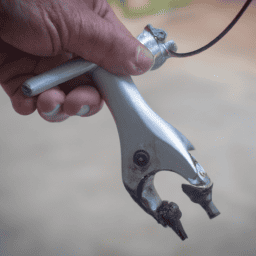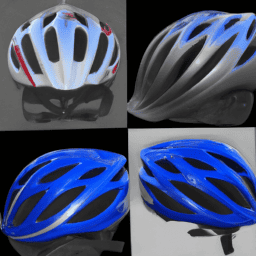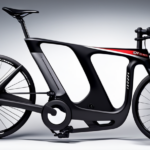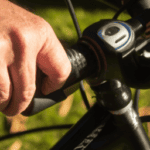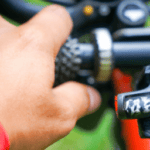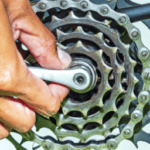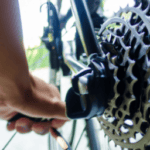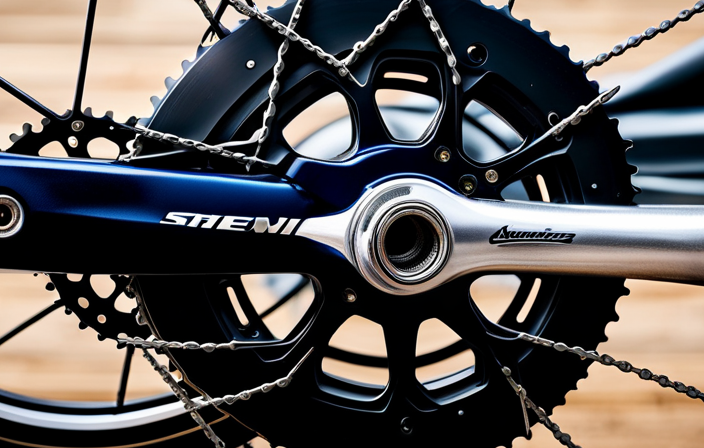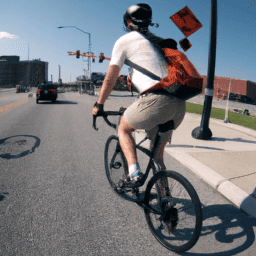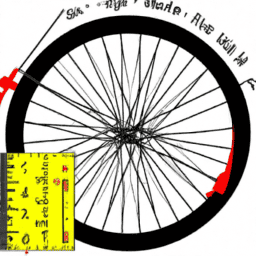Greetings, fellow bike enthusiasts! Are gear shifts giving you a rough time? It might just be the right moment to switch out your gear shifter. Fear not, it’s not as daunting as it appears. Actually, with a handful of simple tools and a bit of focused effort, you can readily swap out your gear shifter and experience a significantly smoother and more effective cycling journey.
Before we begin, it’s important to note that there are different types of gear shifters, so it’s important to identify the type of shifter on your bicycle before proceeding.
In this article, I’ll be providing a step-by-step guide for replacing a trigger shifter on a mountain bike. However, the basic principles can be applied to other types of shifters as well.
So, let’s get started on replacing your gear shifter and getting your bike back in top shape!
Key Takeaways
- Troubleshoot gear shifting issues before replacing the shifter to avoid unnecessary replacement.
- Proper alignment and cable routing are important when installing a new gear shifter.
- Lubrication and cable tension adjustment can improve gear shifting performance.
- Safety precautions should be taken when working on a bicycle, including wearing gloves and avoiding hazardous areas.
Identify the Type of Gear Shifter on Your Bicycle
If you’re not sure what type of gear shifter your bicycle has, it’s important to identify it before attempting a replacement. Did you know that over 70% of bike owners struggle with identifying their gear shifter type?
Most bikes will have either a grip shifter, a trigger shifter, or a thumb shifter. The grip shifter is a rotating collar that sits on the handlebars and is twisted to shift gears. The trigger shifter has two levers that operate a cable that shifts gears. The thumb shifter is a lever that is located near the handlebars and is pushed with the thumb to shift gears.
Common gear shifting issues can be caused by a misaligned derailleur, cable tension, or worn out cables and housing. If you’re experiencing gear shifting issues, it’s important to troubleshoot the issue before attempting to replace the gear shifter.
Once you’ve identified the type of gear shifter on your bicycle and troubleshooted any issues, you can gather the necessary tools and supplies to begin the replacement process.
Gather the Necessary Tools and Supplies
First, you’ll need to gather all the necessary tools and supplies to get started. This includes a new gear shifter, a set of Allen keys, a wrench, a cable cutter, a cable end cap, and a new cable if needed. It’s important to ensure that the new gear shifter is compatible with your bike’s drivetrain system, so check the manufacturer’s specifications before purchasing.
Before beginning the replacement process, it’s important to take some safety precautions. Make sure to wear gloves to protect your hands from sharp edges and moving parts. Also, avoid working on your bike near any hazardous areas or busy roads.
Finally, take your time and avoid rushing through the process to prevent any common mistakes. With the necessary tools and precautions in place, it’s time to move on to removing the old gear shifter.
Removing the Old Gear Shifter
As you prepare to bid farewell to your bike’s old companion, take a moment to locate the clamp bolt that attaches the gear shifter to the handlebar. Using an Allen wrench, loosen the bolt and slide the old gear shifter off the handlebar.
If the bolt is too tight, you may need to apply some penetrating oil to loosen it up. Be sure to keep the bolt and any other small parts in a safe place so that you don’t lose them.
Common problems that arise when removing the old gear shifter include stripped bolt heads and difficulty accessing the bolt due to tight spaces. To troubleshoot these issues, try using a different size wrench or applying more pressure to the bolt with a longer handle. If all else fails, consider taking the bike to a professional for assistance.
Additionally, if you’re interested in upgrading your gear shifter, there are alternative options available such as trigger shifters or grip shifters. These can offer a different feel and potentially improve your riding experience.
Without further ado, let’s move on to installing the new gear shifter.
Installing the New Gear Shifter
Now it’s time to attach the new gear shifter to your handlebar, so grab your tools and let’s get started! Before installation, make sure the gear shifter matches your bicycle’s gear system and is compatible with your handlebar diameter.
Once you have the correct gear shifter, start by loosening the clamp bolt and sliding the shifter onto your handlebar. Tighten the clamp bolt just enough to hold the shifter in place, but don’t fully tighten it yet.
Next, ensure proper alignment of the gear shifter. The shifter should be level with the ground and positioned where it’s most comfortable for you to reach. Once you have aligned the shifter, you can proceed with cable routing.
Run the cable through the shifter and down to the derailleur, making sure it’s properly secured along the way. Once you have completed cable routing, tighten the clamp bolt fully and test your gear shifting performance.
Testing your gear shifting performance is crucial to ensure the new gear shifter is properly installed and functioning correctly. Shift through all gears to ensure smooth transitions and proper shifting. If you notice any issues, such as skipping gears or difficulty shifting, double-check your cable routing and alignment.
Once you’re satisfied with your gear shifting performance, take your bicycle for a test ride to ensure it’s operating smoothly.
Testing Your Gear Shifting Performance
So now that I’ve installed my new gear shifter, it’s time to test it out.
The first thing I’ll need to do is check for smooth gear shifting. If it’s not smooth, I may need to adjust the cable tension.
Once I’ve made any necessary adjustments, I’ll take a test ride to ensure proper functionality.
Checking for smooth gear shifting
To ensure smooth gear shifting, always check for any dirt or debris on the derailleur and chain. The importance of lubrication can’t be overstated in maintaining a properly functioning gear shifter.
Without regular lubrication, the chain and derailleur can become stiff and slow to shift, leading to common gear shifting issues such as skipping gears or difficulty shifting.
To begin, inspect the derailleur and chain for any dirt or debris that may be hindering smooth gear shifting. Use a clean, dry cloth to wipe away any dirt or debris that may be present.
Next, apply a small amount of lubricant to the chain and derailleur, being sure to distribute it evenly. Test the gear shifting performance by shifting through all the gears multiple times, ensuring that each shift is smooth and precise.
If there are still issues with gear shifting, adjusting cable tension may be necessary. By increasing or decreasing the tension on the cables, the derailleur can be properly aligned, improving gear shifting performance.
Adjusting cable tension if necessary
If gear shifting issues persist after cleaning and lubricating the chain and derailleur, it may be necessary to adjust cable tension. Cable tension is responsible for determining how much slack or tightness is present in the cable that connects the shifter and derailleur.
The importance of lubrication cannot be overstated, as it ensures smooth operation of the shifter and derailleur. Common cable tension issues include excessive slack, which can lead to slow shifting or missed shifts, and excessive tightness, which can cause stiffness in the shifter and difficulty in shifting gears.
To adjust cable tension, locate the cable adjuster on the derailleur and turn it clockwise or counterclockwise as necessary. If the cable is too loose, turn the adjuster clockwise until the slack is taken up. If the cable is too tight, turn the adjuster counterclockwise until there is some slack in the cable.
Take care not to overtighten the cable, as this can cause damage to the derailleur or cable. Once the cable tension is adjusted, take a test ride to ensure proper functionality of the gear shifter and derailleur.
Taking a test ride to ensure proper functionality
Before I hop on my bike after replacing the gear shifter, I always make sure to take it for a quick spin around the block to ensure that everything feels smooth and responsive. It’s crucial to test the functionality of the new gear shifter before taking it on a longer ride.
The importance of proper gear shifting cannot be overstated, as it directly impacts the overall performance of the bicycle.
During the test ride, I pay close attention to how the gears shift and if there are any issues with the chain slipping or skipping. If I notice any problems with the gear shifting, I’ll troubleshoot the issue by adjusting the cable tension or checking the alignment of the derailleur.
It’s essential to address any gear shifting issues before they become more significant problems that could potentially damage the bicycle. By taking the time to properly test the gear shifter and troubleshoot any issues, I ensure that my bike is in top condition and ready for my next ride.
Frequently Asked Questions
What is the typical lifespan of a gear shifter on a bicycle?
The typical lifespan of a gear shifter on a bicycle depends on several factors such as frequency of use, riding conditions, and proper maintenance. Regular cleaning and lubrication can help prolong the lifespan of the shifter.
Can you replace a gear shifter without having to remove the bike’s chain?
Replacing a gear shifter can be done without removing the chain, but chain compatibility should be considered when selecting a replacement. There are several gear shifter options available with different installation methods and compatibility.
Is it possible to repair a malfunctioning gear shifter, or is replacement always necessary?
When a gear shifter malfunctions, it may be possible to repair it, but replacement is often the more cost-effective option. Repairs can be tricky and may not last, leading to further expenses down the line.
Are there any special considerations or precautions to take when replacing a gear shifter on a mountain bike versus a road bike?
When replacing a gear shifter, it’s important to consider the type of bike. Mountain bike gear shifters often require more precise adjustments due to rough terrain, while road bike shifters may need a lighter touch. Proper installation techniques are crucial for optimal performance.
How do you adjust the tension of the gear shifter after installation to ensure optimal performance?
To ensure optimal performance, adjusting the tension of the gear shifter is crucial. Common mistakes include misaligning the cable or not properly tightening the adjustment barrel. Adjustment techniques involve fine-tuning the barrel and testing the shifting accuracy.
Conclusion
Well, that’s it for replacing your gear shifter on your bicycle. It may seem like a daunting task, but with the right tools and a little bit of know-how, it’s something that anyone can do.
Remember to take your time and be gentle with your bike when removing the old gear shifter, and be sure to follow the instructions carefully when installing the new one.
Overall, this process can be a bit challenging for those who are new to bike repairs, but it’s definitely worth the effort to ensure that your bike is running smoothly and efficiently.
With a new gear shifter, you’ll be able to shift gears with ease, making your rides much more enjoyable. So why not give it a try and see how much of a difference a new gear shifter can make?
